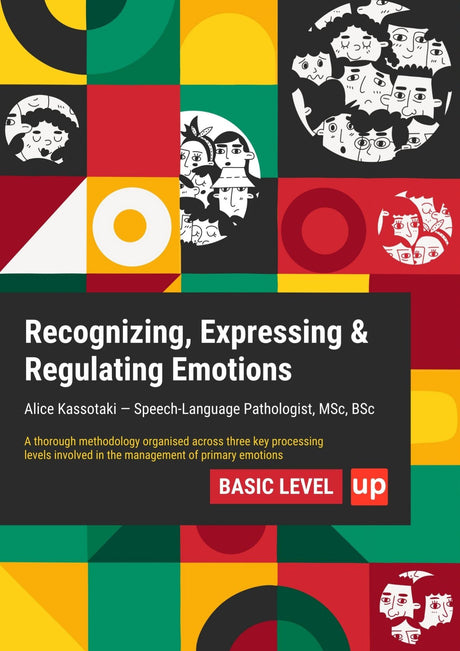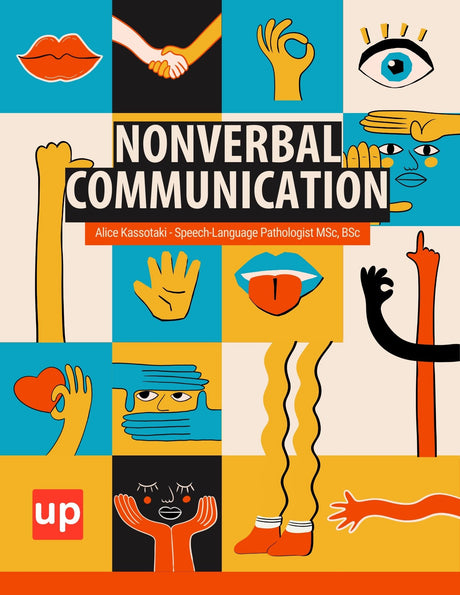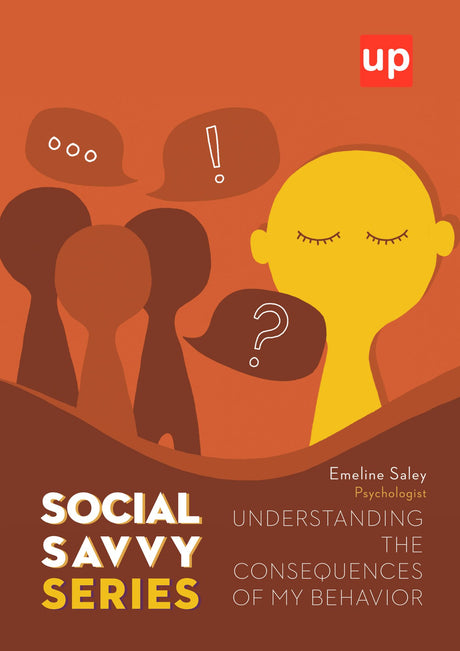Top Strategies for Autism: Effective Approaches for Support and Growth
Looking for strategies for autism? This guide covers effective ways to improve communication, manage behavior, and create supportive environments, as well as teaching social skills and supporting families.
Key Takeaways
- Personalized approaches are essential for supporting autistic individuals due to the variability of their experiences and needs.
- Effective communication techniques, such as visual supports and speech generating devices, significantly enhance the social interactions of autistic individuals.
- Behavioral strategies and family involvement are critical in promoting positive development and emotional well-being for individuals with autism.
Understanding How Autism Affects Behavior and Communication

Autism spectrum disorder (ASD) impacts communication and behavior in various unique and individual ways. The symptoms of autism can vary widely, meaning that each autistic person may experience different challenges and strengths. This variability underscores the importance of personalized approaches to support and intervention.
Individuals with autism often face difficulties in expressing themselves and maintaining relationships, which can lead to frustration and challenging behaviors for autistic people. These behavioral challenges are often a result of communication barriers and the individual’s interpretation and response to their environment. This can include unexpected behaviors when they struggle to process sensory information or when overwhelmed by their surroundings.
Recognize that certain strategies may work well for one person but not for another. This emphasizes the need for a tailored approach to support, taking into account each individual’s unique profile of strengths and needs. Understanding these foundational aspects of autism sets the stage for exploring specific strategies that can help improve the quality of life for autistic individuals.
Communication Techniques for Autistic Individuals

Improving communication skills is vital for autistic individuals, as it significantly enhances their ability to interact socially and affect communication overall quality of life. Various methods, from minimal equipment to sophisticated technology, can be utilized to support and develop these skills.
Techniques such as using visual supports, speech generating devices (SGDs), and non-verbal methods like sign language play crucial roles in this process. These practical approaches not only improve verbal communication but also empower autistic individuals in their everyday interactions.
These strategies allow therapists and educators to tailor interventions to the unique needs of each autistic person, enhancing communication effectiveness.
Using Visual Supports and Schedules
Visual supports and schedules are powerful tools in aiding communication for autistic individuals. Visual schedules, such as Picture Exchange Communication System (PECS), use images to represent thoughts and requests, helping students understand upcoming activities and transitions. Visual information is more durable and concrete compared to auditory information, which enhances understanding and reduces anxiety.
These visual aids are effective because they provide explicit instructions and expectations, making it easier for autistic individuals to navigate changes and understand their environment. Visual cues and clear instructions can significantly improve their ability to process and respond to information.
Speech Generating Devices (SGDs)
Speech generating device (SGDs) are essential tools for non-verbal autistic individuals, enabling them to express their thoughts and needs through speech produced by the device. These speech generating devices can be customized to the user’s needs, using alphabet keys or visual symbols to facilitate effective communication.
SGDs are beneficial for a wide range of ages, from young children to young adults, providing a versatile solution for enhancing communication.
Sign Language and Other Non-Verbal Methods
Non-verbal communication methods, including sign language and communication boards, are crucial for many autistic individuals. These tools help express needs and thoughts effectively, especially for those who find verbal communication challenging. Therapists should consider the unique needs and abilities of each child when selecting a communication method, ensuring it aligns with their capabilities and preferences.
Combining body language, visual cues, and facial expressions with tools like sign language can significantly enhance communication skills, offering a comprehensive system for autistic individuals to convey their needs and interact meaningfully.
Behavioral Strategies to Support Positive Development

Behavioral strategies are essential for supporting the positive development of autistic individuals. Communication challenges often lead to frustration and potential outbursts, making it crucial to address these issues effectively. Overwhelming environments can exacerbate these challenging behaviour, highlighting the need for tailored interventions.
Various evidence-based practices, such as response interruption and redirection (RIR) and antecedent-based interventions (ABIs), are implemented to manage challenging behaviors and promote desired behaviors through evidence based strategies. These strategies modify the environment or context to influence behavior positively, ensuring a more supportive atmosphere.
Creating a welcoming environment and incorporating functional communication training with reinforcement strategies can significantly improve the lives of autistic individuals, fostering their personal growth and engagement.
Applied Behavior Analysis (ABA)
Applied Behavior Analysis (ABA) employs a variety of techniques for structured skill development and behavior modification. This method targets specific behaviors, such as head banging, and skills like washing hands, through Discrete Trial Teaching (DTT). DTT involves repeating trials with clear directions and reinforcement through praise and rewards, ensuring effective learning.
Reinforcement in ABA serves to reinforce desired skills or behaviors, making it a highly effective approach. Pivotal skills identified through ABA are foundational for major improvements for autistic individuals.
Additional practices included in DTT are task analysis, reinforcement, prompting behavior, and time delay practices.
Positive Reinforcement Techniques
Positive reinforcement is a cornerstone of effective behavioral strategies. By rewarding desired behaviors with positive outcomes, it encourages the continuation of these behaviors. Positive reinforcement can involve various types of rewards, including concrete rewards and intrinsic rewards, tailored to the individual’s preferences.
The main aim of Positive Behavior Support (PBS) is to improve the quality of life and reduce concerning behaviors, making it an essential practice in supporting autistic individuals.
Sensory Integration Therapy
Sensory integration therapy aims to alleviate hypersensitivity to sensory stimuli in children with autism. This therapy introduces sensory stimuli gradually, helping the child adapt without feeling overwhelmed.
By doing so, it supports the child’s ability to process sensory information in a more manageable way.
Creating an Autism-Friendly Environment

Creating an autism-friendly environment is crucial for supporting autistic individuals. Effective communication often requires using the individual’s name to capture attention at the start of interactions. Autistic individuals may struggle to filter out irrelevant information, necessitating concise and clear communication.
Individualized strategies are essential for managing behaviors, fostering personal responsibility, and reducing anxiety. Setting clear behavior expectations using visual aids can significantly aid in teaching new skills. Social stories can assist children in understanding social cues and reducing anxiety in various situations.
Adjusting Communication Styles
Using straightforward language helps autistic individuals comprehend instructions more easily. Visual supports can greatly enhance understanding, as they provide concrete information that is easier to process.
Combining visual aids with verbal instructions can significantly aid autistic learners in understanding directions and managing transitions effectively.
Structuring the Physical Environment
Organizing physical spaces to minimize distractions can improve focus for students with autism. Defined areas for specific activities and clear pathways can facilitate smoother movement and focus. Reducing clutter and arranging seating to promote engagement can enhance learning outcomes for autistic students.
Teaching Social Skills and Emotional Regulation

Children with ASD often face challenges in social interaction and communication, which can manifest as rigid language patterns or echolalia. Understanding nonverbal cues such as gestures and facial expressions can be particularly difficult, complicating interactions. Building on strengths and successes helps promote a sense of competence and motivation in autistic individuals.
Encouraging teamwork among autistic and non-autistic students can lead to improved social skills and mutual understanding. Facilitating opportunities for these students to work together fosters friendship and learning.
Social Narratives and Role-Playing
Role-playing activities provide children with autism safe environments to practice social interactions, improving their skills through structured scenarios. Personalized teaching stories enhance comprehension of social situations by visually depicting interactions, making them more understandable for children with autism.
Social Stories help understand social situations and reduce anxiety. Structured social skills training significantly helps autistic children improve their ability to engage in social situations and build relationships, enhancing their social behaviours.
Cognitive Behavioral Interventions
Cognitive-behavioral interventions are designed to help autistic individuals challenge and modify negative thoughts and emotions. These strategies help reshape negative thought patterns and often incorporate relaxation techniques to assist with emotional distress.
By adopting these evidence-based practices, autistic individuals can learn to manage their feelings and behaviors more effectively, leading to improved emotional regulation.
Practical Tips for Educators and Therapists
Educators and therapists play a pivotal role in the development and support of autistic individuals. Implementing evidence-based practices is essential for effective interventions. Positive reinforcement encourages desired behaviors by providing individualized rewards tailored to the person’s preferences.
Modifying tasks and using concrete materials like images and blocks can aid understanding for autistic individuals. Incorporating student interests into the learning process enhances engagement and effectiveness. Strategies for making tasks inclusive include modifying tasks appropriately to different learning needs, ensuring all students can participate meaningfully.
Providing clear instructions and immediate feedback during learning tasks can help students with autism build their skills more effectively. Teacher emotional support significantly boosts the motivation and performance of autistic students and can also help teach skills.
Providing Effective Feedback
Immediate and constructive feedback is crucial for the learning process. Providing clear instructions and positive feedback helps autistic students understand expectations and improve their skills. Allowing a student to engage in rewarding activities related to their interests can support their learning and make the process more enjoyable.
Teacher emotional support is also vital. It helps autistic students feel valued and understood, which significantly enhances their educational experience and outcomes.
Collaboration and Inclusivity
Collaborative work promotes friendships and deeper understanding among students with and without autism. By encouraging observation and interaction, collaboration fosters inclusivity in educational environments.
Engaging autistic students in group work through individualized tasks, specific roles, or tutoring positions ensures their active involvement. This approach provides opportunities for meaningful participation and helps them reach their full potential.
Supporting Families of Autistic Individuals
Family members play a crucial role in the development and support of autistic individuals. Understanding their unique needs and providing consistent care and support significantly influences their social and emotional well-being. Family support groups can provide vital connections and shared experiences that help families navigate the challenges of autism.
Integrating family members into therapeutic interventions enhances treatment effectiveness and fosters supportive home environments. Including family in therapy sessions promotes consistency in approaches and strategies to support the autistic individual effectively.
A range of resources is available to assist families in understanding autism and accessing support networks. These resources provide valuable information and support, helping families navigate the complexities of raising an autistic child.
Family Involvement in Therapy
Integrating family members into therapeutic interventions can enhance treatment effectiveness and foster supportive home environments. Involving family in therapy enhances consistency and reinforces learned skills at home.
Including family in therapy sessions promotes consistency in approaches and strategies to support the autistic individual effectively.
Resources for Families
Numerous resources are available to assist families in understanding autism and accessing support networks. These resources provide valuable information and support, helping families navigate the complexities of raising an autistic child.
A range of resources is available to assist individuals with autism. These resources offer guidance and support, ensuring that families have the tools they need to provide the best possible care for their autistic children.
Summary
In summary, understanding autism and implementing effective strategies for support and growth are crucial for enhancing the lives of autistic individuals. From improving communication skills and employing behavioral strategies to creating autism-friendly environments and supporting families, each approach plays a vital role. By fostering understanding, inclusivity, and tailored support, we can make a significant difference in the lives of those on the autism spectrum. Let’s continue to advocate for and support the autistic community, ensuring they have the opportunities and resources needed to thrive.
Frequently Asked Questions
What are some effective communication techniques for autistic individuals?
Utilizing visual supports, speech generating devices, and non-verbal methods such as sign language and communication boards can greatly enhance communication for autistic individuals. These strategies foster clearer interactions and understanding.
How can visual supports aid in communication for autistic individuals?
Visual supports, such as visual schedules and PECS, significantly enhance communication for autistic individuals by offering clear, concrete information that aids comprehension and minimizes anxiety. Incorporating these tools can create a more supportive environment for effective interaction.
What is Applied Behavior Analysis (ABA), and how does it help autistic individuals?
Applied Behavior Analysis (ABA) is a therapeutic approach that utilizes structured techniques to promote skill development and modify behaviors in autistic individuals, focusing on targeted behaviors through methods such as Discrete Trial Teaching and reinforcement. This methodology effectively enhances communication, social skills, and adaptive behaviors, leading to improved quality of life.
How can educators create an autism-friendly environment?
Creating an autism-friendly environment involves clear communication, tailored strategies, use of visual aids, and organizing spaces to reduce distractions. Implementing these practices can significantly support autistic learners in their educational journey.
Why is family involvement important in supporting autistic individuals?
Family involvement is crucial as it enhances therapy effectiveness, ensures consistent approaches, and creates a supportive home environment, all of which significantly impact the social and emotional well-being of autistic individuals.
Original content from the Upbility writing team. Reproduction of this article, in whole or in part, without attribution to the publisher is prohibited.
References
- Autism Speaks. (2023). Understanding Autism. Retrieved from Autism Speaks
- National Institute of Mental Health. (2023). Autism Spectrum Disorder. Retrieved from NIMH
- Centers for Disease Control and Prevention. (2023). Autism Spectrum Disorder (ASD). Retrieved from CDC
- American Psychological Association. (2023). Autism. Retrieved from APA
- Autism Society. (2023). Autism and Communication. Retrieved from Autism Society
- Autism Research Institute. (2023). Behavioral Interventions for Autism. Retrieved from Autism Research Institute
- Mayo Clinic. (2023). Autism Spectrum Disorder. Retrieved from Mayo Clinic
- Child Mind Institute. (2023). Autism Spectrum Disorder Basics. Retrieved from Child Mind Institute
- World Health Organization. (2023).









